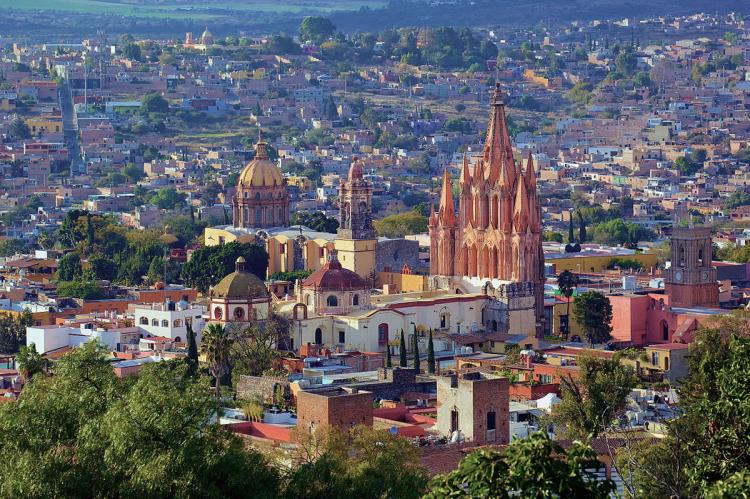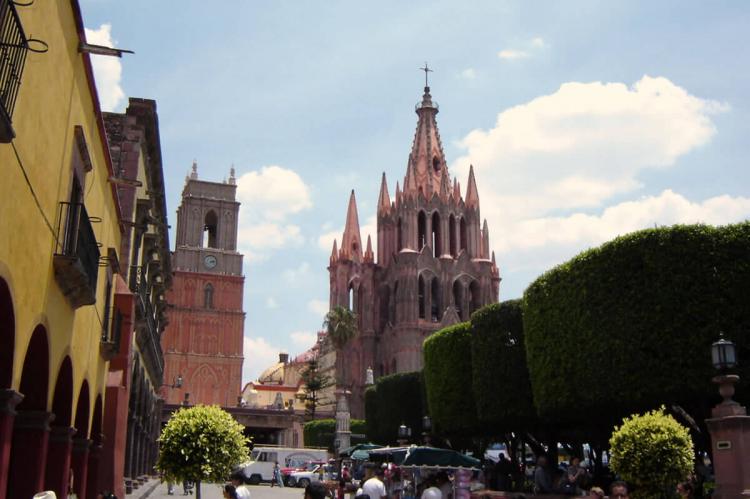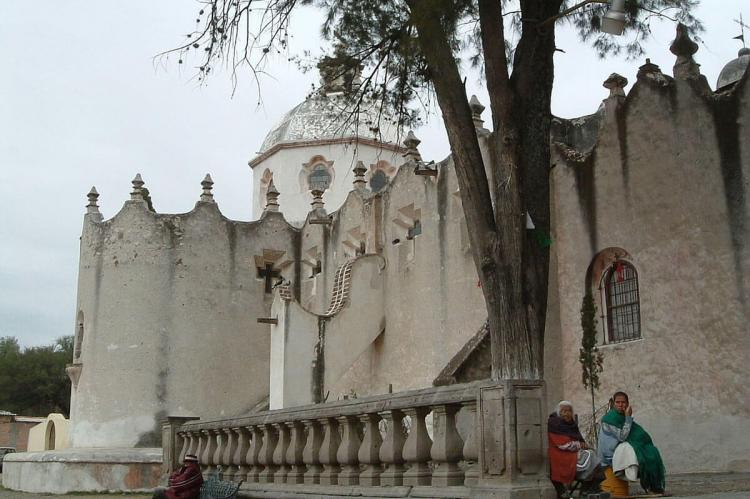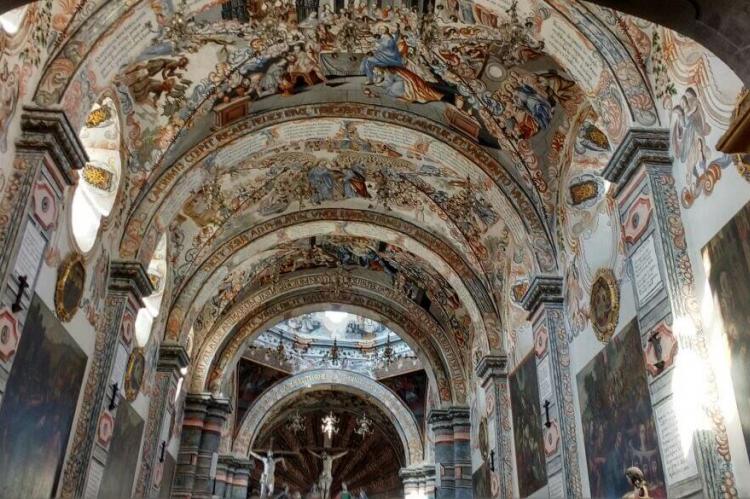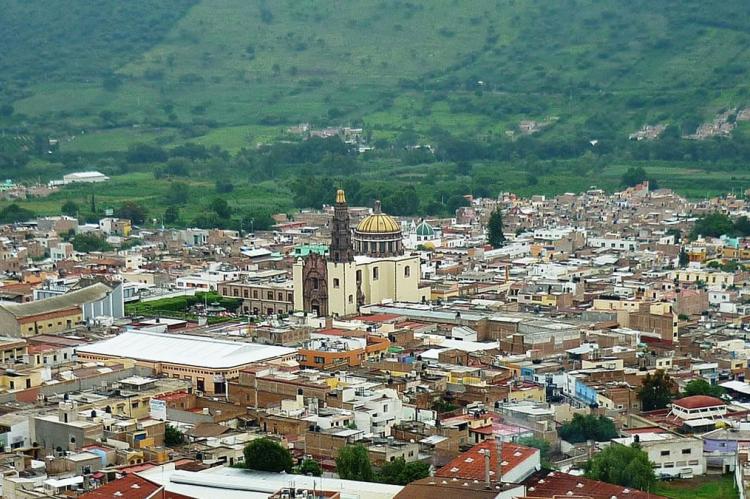San Miguel de Allende: Weaving the Threads of Mexican History, Culture, and Architectural Splendor
Nestled in the heart of the Bajío region, the city of San Miguel de Allende in the far eastern part of Guanajuato, Mexico, along with the Sanctuary of Jesús Nazareno de Atotonilco, a jewel of Baroque art and architecture, is a testament to the richness of Mexican history, culture, and architectural heritage.
San Miguel de Allende: Weaving the Threads of Mexican History, Culture, and Architectural Splendor
Nestled in the heart of the Bajío region, the city of San Miguel de Allende, situated in the far eastern part of Guanajuato, Mexico, is intricately linked with the Sanctuary of Jesús Nazareno de Atotonilco. This Sanctuary, recognized for its exquisite Baroque art and architecture, is a profound testament to the multifaceted richness of Mexican history, culture, and architectural heritage.
San Miguel de Allende and the Sanctuary weave a compelling narrative reflecting the intricate threads of Mexico's past, cultural diversity, and the enduring legacy of architectural brilliance. The city stands as a living canvas, portraying the vibrant hues of Mexican history and cultural identity. At the same time, the Sanctuary unfolds as a masterpiece, illustrating the artistic intricacies and historical significance that contribute to the captivating story of this region.
Historical Roots and Significance
The city's name, San Miguel de Allende, pays homage to two influential figures in Mexican history: 16th-century friar Juan de San Miguel and the martyr of Mexican Independence, Ignacio Allende. This historic city played a crucial role during the Chichimeca War (1540–1590), where the Chichimeca Confederation successfully resisted the Spanish Empire's initial colonization efforts. Today, the city retains its historical charm, and an old section of San Miguel de Allende is part of a proclaimed World Heritage Site.
UNESCO World Heritage Site
San Miguel de Allende shares its UNESCO World Heritage Site status with the Sanctuary of Jesús Nazareno de Atotonilco. The town and the Sanctuary are intimately linked and played significant roles in the process of Mexican independence, with far-reaching impacts throughout Latin America. Founded in 1542 as a mission and military outpost, San Miguel de Allende flourished along the Antiguo Camino Real, becoming a crucial stopover on the silver route from Zacatecas.
Architectural Marvels and Cultural Fusion
The 18th-century boom in construction transformed San Miguel de Allende into a showcase of diverse architectural styles, ranging from Baroque to late 19th-century Neo-Gothic. Urban mansions, characterized by their exceptional size and richness, exemplify the transition from Baroque to Neo-Classical in this medium-sized Latin American town. The fortified town, established initially to protect the Royal Route inland, reached its pinnacle in the 18th century by constructing outstanding religious and civic buildings reflecting the Mexican Baroque style.
Cultural Exchange and Influence
San Miguel de Allende's strategic location facilitated a cultural melting pot where Spaniards, Creoles, and Amerindians exchanged influences, leaving an indelible mark on the city's character. The Sanctuary of Jesús Nazareno de Atotonilco, located approximately 14 km from the town, is a remarkable Jesuit sanctuary showcasing Baroque art and architecture. Decorated with oil paintings by Rodriguez Juárez and mural paintings by Miguel Antonio Martínez de Pocasangre, the refuge is a masterpiece of Mexican Baroque. It reflects the influence of Saint Ignacio de Loyola's doctrine.
The Sanctuary of Jesús Nazareno de Atotonilco
Dating back to the 18th century, the Sanctuary of Jesús Nazareno de Atotonilco is a jewel of Baroque art and architecture in New Spain. Located near San Miguel de Allende, this Jesuit sanctuary played a pivotal role in the cultural and spiritual life of the region.
Architectural Masterpiece
The Sanctuary is a sprawling architectural complex comprising a large church and several smaller chapels. Renowned for its Baroque artistry, the Sanctuary boasts oil paintings by Rodriguez Juárez and mural paintings by Miguel Antonio Martínez de Pocasangre. The exquisite decorations within the refuge, especially the mural paintings, make it a quintessential Mexican Baroque masterpiece.
Influence of Saint Ignacio de Loyola's Doctrine
The architectural and interior design of the Sanctuary of Atotonilco reflects a specific response inspired by the doctrine of Saint Ignacio de Loyola. The intricate details within the Sanctuary's decoration are a testament to the fusion of European and Latin American cultures. This cultural exchange is encapsulated in the Sanctuary's architecture, contributing to the rich heritage of San Miguel de Allende.
Spiritual Significance
Beyond its artistic grandeur, the Sanctuary of Jesús Nazareno de Atotonilco holds profound spiritual significance. Pilgrims and visitors are drawn to the Sanctuary for its religious importance, and the site has become a place of contemplation and reverence. The Sanctuary's role in the historical narrative of Mexican independence further enhances its cultural and spiritual resonance.
UNESCO World Heritage Site
Recognizing its cultural and historical importance, the Sanctuary of Jesús Nazareno de Atotonilco shares the UNESCO World Heritage Site designation with San Miguel de Allende. The intimate connection between the town and the Sanctuary underscores their intertwined roles in shaping Mexican history and influencing broader Latin American perspectives.
San Miguel de Allende and the Sanctuary of Jesús Nazareno de Atotonilco form a captivating narrative of Mexican heritage. As a UNESCO World Heritage Site, this cultural symphony transcends mere architecture and history; it embodies the spirit of a nation, reflecting the exchange between diverse cultures and the enduring legacy of spiritual and artistic expression. The pairing of San Miguel de Allende and the Sanctuary is a testament to Mexican heritage's resilience and richness, inviting visitors to explore and appreciate the profound depth of this cultural tapestry.
